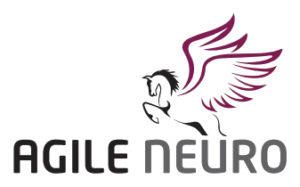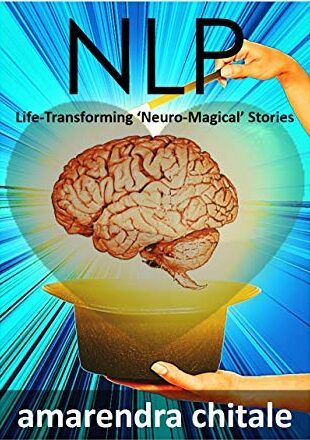
“Selling mobiles through retail shops is very difficult these days, with all the online portals offering the Ponzi schemes”, exclaimed my friend who owns around 4 Mobile phone outlets in Pune. “No, my friend”, I disagreed, “The same is true about clothes. But I am one of those who would rather buy from a shop. I certainly don’t enjoy the lack of feel and how do I know if the Jeans would really fit?” “You have an option of returning if it doesn’t fit”, argued my friend. “Too complicated”, I drank my last sip of coffee and got up to leave for home. “Okay, how people do you think there are in this city who think like you? And how many shops are there, not to mention the malls. That’s why I’m saying, it’s become difficult to do business this way. I think I’ll have to go the Amazon way”, sighed my friend. I asked my friend about the number of walk-ins he gets everyday and his conversion rate. Indeed, the conversion rate was bad. But one thing was good. Walk-ins were not in single digits. I said I’ll help.
So next day morning, I was at one of my friend’s shop, observing how his staff was selling mobile phones to walk-ins. I thought it was total disaster the way they were selling. No sign of initial small-talk or any attempt of building Rapport. Need analysis was totally missing. I decided I need to step in. I started handling customers in that outlet for the entire day. We sold 5 mobiles in the first 2 hours and sold 15 in the entire day. “The guy can do magic”, is what the intern salesmen were saying.
So, what did I do? And what is it that all of us can do to ensure sale? Well, I followed the Sales process religiously, that is:
- Greeting, Small-Talk, building Rapport
- Identifying the need (Why does the customer need the phone? What is he going to do with it?)
- Summarizing the Values which the customer is looking for
- Presenting to him the solution by attaching the product’s Values to his Values (that’s an ‘Aha’ moment for him)
- Closing the deal by saying (Makes sense buying this one, doesn’t it?)
Very important these steps are followed and there is something more to it. I remember in college, I had noticed almost everyone sits at the same place in the class day after day. I wondered why? Is it because the place calls out to them? Maybe their senses call out to them. After learning NLP, I realized that your Primary Learning Style (Primary Representational System) is a big stake holder in deciding where you would sit in the class. Not only that, but also in various things we do, for example, when we buy something. We all have a dominant sense out of the 5 senses that we rely on more than the others. We call that as the Primary Representational System. So, the Visuals will sit in the first two rows because they need to ‘see’ it all. Auditory guys would sit in the middle of the class, because they don’t need to ‘see’ it all. They are mostly learning through ‘listening’. Then we have the back-benchers. Most of the time, keen to ‘do’ something. Fiddling and moving. These are the Kinaesthetic ones who learning through ‘doing’ or ‘feeling’.
Now link this concept with your Buying Strategy. You will find that the Visuals would want to ‘see’ the mobile phone. They would look for different colours of the mobile cover. For them, the HD screen of the mobile would be of great value; the size and the clarity. They would want a mobile phone with high definition/Mega Pixel camera because for them, it is all about great pictures. Not only back, but front camera as well. The Auditory guys would definitely check for the music system in the phone, the ringtones, voice clarity, voice commands etc. The Kinaesthetic ones would probably look for the size, shape, thickness of the phone etc. While selling the phone to them, they would want to hold it in their hands to get a ‘feel’ of it. They may even hold it against their ear, to get the feel. The mobile cover and its texture would also be thoroughly checked. Basically, ‘the feel’ covers both, the emotions part and the touch part.
Apart from these, we also have the analytical ones, the logical ones who nominalize and give labels. These are the Auditory-Digital guys who would go in great detail of the device configuration; the RAM, ROM, Processor speed, Operating system etc. Now we all make use of all the senses, but their level of utilization defers. I had a friend who was looking for direction signs on the road and suddenly he turned down the stereo system in his car. That is because his Primary Learning style was Auditory and hence the music was coming in the way of his information gathering activity, which he was doing through his vision. Tomorrow, you go to buy a mobile phone and you will realize that you will check for all the things listed above, probably more than what is listed above. But you will pre-dominantly go for something that will satisfy the Values or your expectations, fuelled by your Learning style. At least, your buying strategy will reflect your Representational System.
What I did in the shop on that day was three things:
- Had a small talk and built Rapport by Matching and Mirroring the physiology, the tonality and the discussion topic points.
- Followed the Sales process religiously with more focus on selling a solution than a Product. While doing that, I did something unique which is mentioned below
- Had the sensory acuity, where I was calibrating the customer through small talk. I was mainly checking his eye-movements when he was answering some need related questions. Now check this out! We can get to know the Primary Representational System by looking at the eye movements. If you ask typical need-based questions to anyone and carefully look at the eye-movements, you will find the eyes going Top-left, top-right or top. Side-left or side-right. Bottom-left or bottom-right. Here are the definitions of what it means:
- Top Left is Visual Recall (recalling a memory through pictures)
- Top Right is Visual Construct (constructing through pictures)
- Side-Left is Auditory Recall
- Side-Right is Auditory Construct
- Bottom-Left is Auditory Digital
- Bottom-Right is Kinaesthetic
This configuration is true for a normally organized person. Reversely organized person will have these the other way. We can check this my asking questions where the person needs to remember or construct something. Based on the eye-movements, you can calibrate the Learning Style. The first movement of the eye is called the Lead Representational System which may or may not be the same as the Primary Representational System. Lead Rep System could be the key to access the main Representational System. For Example, we see and we feel or we hear and we feel. This will have the corresponding eye-movements to support it.
Apart from this, it is important to also listen to what the customer/client is saying. Some predicates which the customer chooses to use tell a lot about their Learning style. For example, ‘sounds good’, ‘I see what you mean’, ‘feels good’, ‘this makes sense’ tells what sense they are using predominantly. So based on my sensory acuity, I presented to myself a hypothesis of the predominant sense which the customer was using. Based on that, I would present to him an appropriate mobile phone and in a way, which would make him either ‘see’ the value or convince him that it ‘sounds good’ or ‘feels good’. I didn’t hesitate to let the Kinaesthetic customers hold the phone in their hand as that would make them ‘feel’ good and would help them decide easily. The Auditory-Digital customers were very easy to deal with as they were looking for the logical and configurational right fit for their need.
Now most of my friend’s sales force is NLP Certified (Practitioner and Master Practitioner level) through Agile Neuro (agileneuro.com) and are doing a marvellous job in selling the Mobile phones through Retail shops. Nobody is complaining now about the online stores and the Ponzi schemes. One of the outlets received an appreciation for selling a lot of iPhone X. That’s true something isn’t it?










Informative….good one